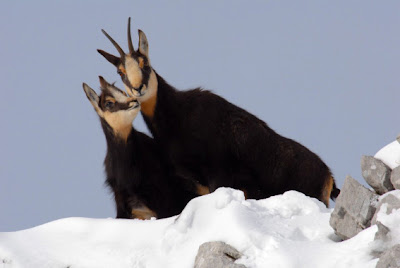Members of the genus Bison
are large, even-toed ungulates within the subfamily Bovinae. Two extant
and four extinct species are recognized. The surviving species are the
American bison, also known as the American buffalo (although it is only
distantly related to the true buffalo), Bison bison (with two
subspecies, the plains bison, Bison bison bison, and the wood bison,
Bison bison athabascae), found in North America, and the European bison,
or wisent (Bison bonasus), found in Europe and the Caucasus. While
these species are usually grouped into their own genus, they are
sometimes included in the closely related genus Bos, together with
cattle, gaur, kouprey and yaks, with which bison have a limited ability
to interbreed.
The American bison and the European wisent are the largest terrestrial animals in North America and Europe. Bison are good swimmers and can cross rivers over half a mile (1 km) wide. Bison are nomadic grazers and travel in herds. The bulls leave the herds of females at 2 or 3 years of age, and join a male herd which is generally smaller than the female herds. Mature bulls rarely travel alone. Both sexes get together for the reproductive season, towards the end of the summer. American bison are known for living in the Great Plains. Both species were hunted close to extinction during the 19th and 20th centuries, but have since rebounded. The American plains bison is no longer listed as endangered, but the wood bison is on the endangered species list in Canada.
The American bison and the European wisent are the largest terrestrial animals in North America and Europe. Bison are good swimmers and can cross rivers over half a mile (1 km) wide. Bison are nomadic grazers and travel in herds. The bulls leave the herds of females at 2 or 3 years of age, and join a male herd which is generally smaller than the female herds. Mature bulls rarely travel alone. Both sexes get together for the reproductive season, towards the end of the summer. American bison are known for living in the Great Plains. Both species were hunted close to extinction during the 19th and 20th centuries, but have since rebounded. The American plains bison is no longer listed as endangered, but the wood bison is on the endangered species list in Canada.
















.jpg)


































